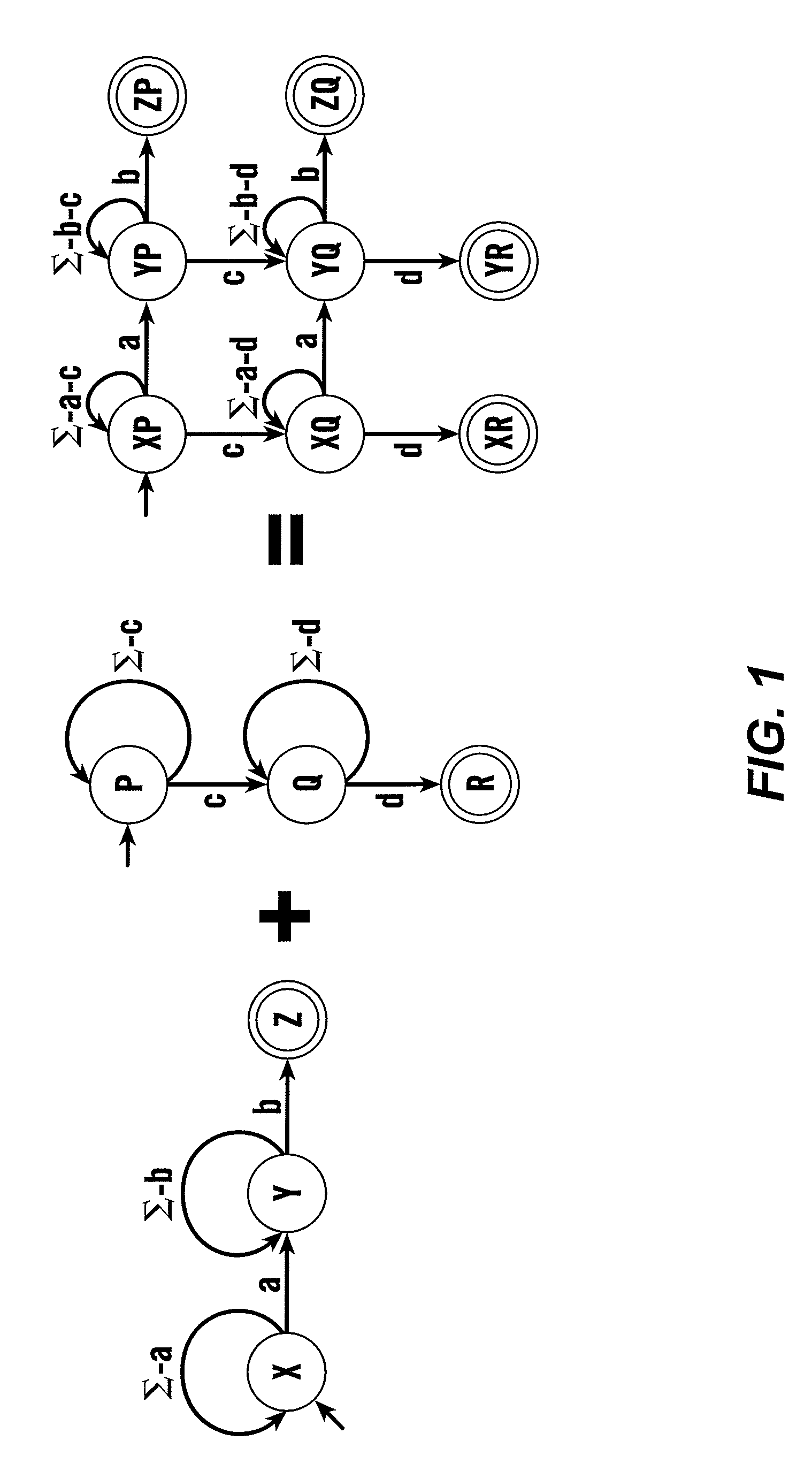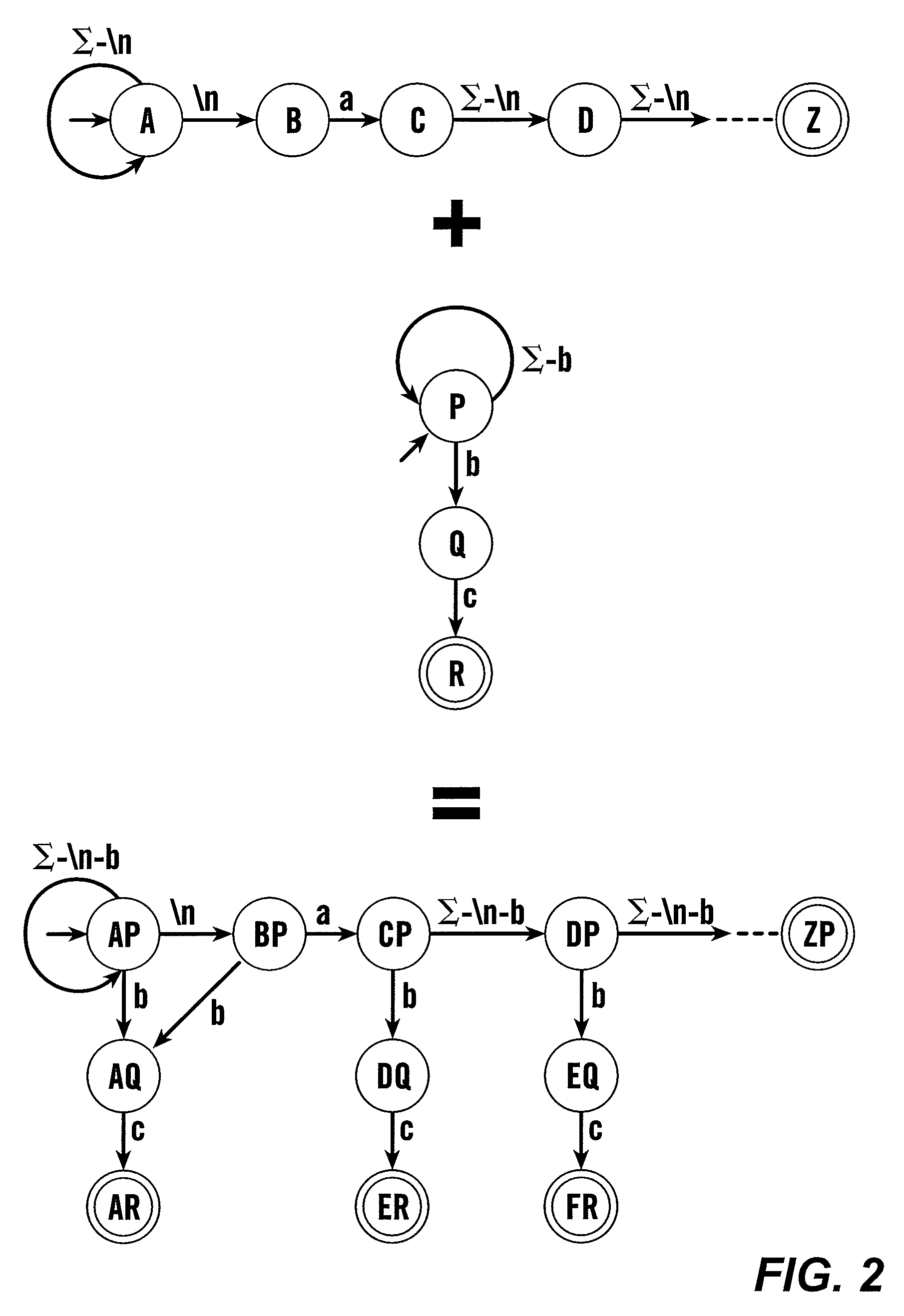Extended finite state automata and systems and methods for recognizing patterns using extended finite state automata
a finite state and automata technology, applied in the field of infinite state automata, can solve the problems of state space explosion, hardest challenges facing network equipment manufacturers, and different memory vs. performance tradeoffs of nfas
- Summary
- Abstract
- Description
- Claims
- Application Information
AI Technical Summary
Benefits of technology
Problems solved by technology
Method used
Image
Examples
Embodiment Construction
[0014]A new type of Finite State Automata (FSAs), eXtended Finite Automata (XFAs), according to this invention, provide an alternate representation for signatures with memory requirements similar to NFAs and with a matching speed that approaches DFAs. XFAs extend DFAs by introducing a small “scratch memory” holding bits, counters and / or other appropriate data structures that are manipulated by simple programs attached to the transitions and / or the states of the XFA and executed whenever the annotated transitions are traversed and / or whenever the annotated states are reached. By using bits, counters and / or other appropriate data structures to independently record the progress in matching various signatures, XFAs largely avoid the state space explosion problem inherent in combining DFAs. A fully functional XFA prototype has been built and has been evaluated using signature sets from the Snort Network Intrusion Detection System, disclosed in M. Roesch, “Snort—lightweight intrusion dete...
PUM
 Login to View More
Login to View More Abstract
Description
Claims
Application Information
 Login to View More
Login to View More - R&D
- Intellectual Property
- Life Sciences
- Materials
- Tech Scout
- Unparalleled Data Quality
- Higher Quality Content
- 60% Fewer Hallucinations
Browse by: Latest US Patents, China's latest patents, Technical Efficacy Thesaurus, Application Domain, Technology Topic, Popular Technical Reports.
© 2025 PatSnap. All rights reserved.Legal|Privacy policy|Modern Slavery Act Transparency Statement|Sitemap|About US| Contact US: help@patsnap.com



